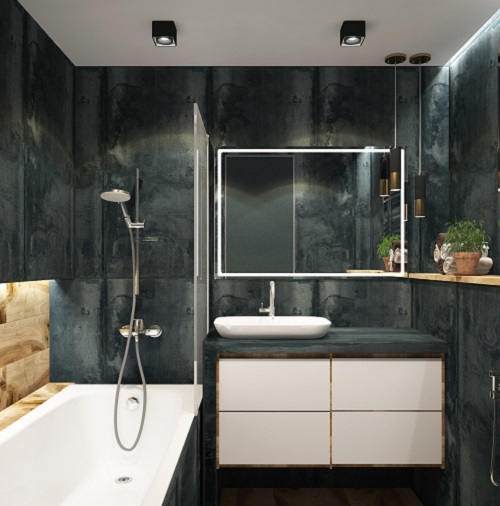Does a toilet need a vent? An open vent in the bathroom is a great way to help your toilet run better. Many experts recommend that every toilet be vented.
However, you may not know what a vent does or why it’s important for your toilet to have one. You might also be wondering how to add one yourself.
We’ll explore several topics about vents, including the benefits of a toilet vent, what happens if a toilet is not vented, and how to vent a toilet.
What Are the Benefits of a Toilet Vent?
Even though a toilet vent is a simple addition, it can help your bathroom run better. The following are the reasons why your toilet needs a vent pipe.
Supply fresh air: A plumbing vent is responsible for supplying every fixture in the home with fresh air. Without a vent, you could have problems with odors, moisture, and mold. The vent helps to prevent this by allowing the water in your toilet to drain properly.
Prevents back-drafting: Back-drafting occurs when the exhaust gases from the drain line are drawn into the house instead of being vented outside. Back-drafting can cause the home to fill with dangerous fumes, some explosive, while others are serious health hazards. A plumbing vent prevents back-drafting by ensuring that exhaust gases are vented outside.
Regulates air pressure: The vent has another important function. It regulates the air pressure between your home and the drain line. This prevents gases from building up in your pipes and causing damage to your plumbing system.
Reduces clogging: Clogging is one of the most common plumbing problems. The vent prevents clogging by allowing air to flow through the drain line, allowing smooth water flow out of the pipes. This prevents obstruction and allows water to drain out quickly.
What Happens if a Toilet Is Not Vented?
If your toilet is not vented, several things can happen.
The toilet will overflow: If your toilet is not vented, it likely will overflow. The negative air pressure does not allow water and waste to go down through drainage.
A build-up of dangerous gases: If your toilet is not vented, the water will not drain. This can create a build-up of dangerous gases in your plumbing system. The gases can be explosive and can cause fires. The gases may also be toxic and cause health problems.
Bad odor: The house will be filled with bad smells. This is because of the build-up of gases in the toilet pipes that can’t find a way out.
The toilet will not flush properly: The water will not be able to drain out of the toilet bowl. This can cause clogs in the pipes and prevent waste from exiting the system.
Slow toilet drain: A toilet that is not vented will have a slow drain. This is because air cannot escape from the pipes, which causes water to push against it and slow its progress.
How to Vent a Toilet?
A toilet can be vented in a few steps. If you are not handy, you should call a professional. Venting a toilet is not as difficult as it seems and can be done by following these steps:
1. Open the Drain Pipe of the Toilet
The toilet flange, which you can see from the outside, is where the drainage system for the toilets begins. By reducing it by 3″ on the elbow, attach a 4″ toilet drain pipe to the flange. Reducing the inches allow the free flow of waste.
2. Join the Waste Pipe
Fix a trap arm pipe that extends horizontally from the flange at the end, where you’ve reduced the elbow to 3″. The trap can run for as long as you wish before connecting to the vent in areas where plumbing codes are not an issue.
In areas with UPC requirements, the toilet vent should have a distance of 6 feet. Follow the trap-venting distance requirements during installation to avoid having to remodel your home after building inspectors discover the violations.
3. Join the “Y” Bend
Connect the “y” bend at an appropriate distance. This connector forms a Y shape and attaches the ground trap to the vertical vent that rises above roof level.
Glue the connector at the right angle to ensure the vent and the trap function optimally without clogging the elbow. You can shorten the vertical end of the trap to 2″ by connecting a reducer and leave it at 3″ if you wish.
If you live under UPC restrictions, avoid reducing the size of the Y connector.
4. Join the Vent
Connect the vent pipe’s right side at the vertical “Y” edge, extending it far enough to pass through the roof.
Ideal connector placement is at the edge, where the vent will follow a wall. Ideally, either the outside or, if inside, the farthest corner.
Follow the UPC regulations once more regarding vent size, although ideally, the pipe shouldn’t be any smaller than 2″.
Make sure all the fittings are done correctly. But first, think about your ground’s gravity and slope.
With correct installation, the vent should safeguard the trap seals and maintain adequate aeration throughout the drainage system.
It’s Better to Have a Toilet Vent
So, does a toilet need a vent? Yes, it does. The toilet vent is a necessary component of any home’s plumbing system.
Without it, you’re inviting problems with odors and wastewater backup into your bathroom. It’s also an important part of your home’s ventilation system, helping air flow freely throughout the house.
Installing a toilet vent is a quick and easy project that can save you from headaches in the future. However, not everyone can install a toilet vent themselves. If you don’t feel comfortable tackling this project, contact a licensed plumber for assistance.
A good plumber will advise you on how to properly install a toilet vent, and they will make sure that they do it right. Finally, if you’re unsure whether your home has a toilet vent, look for one on top of your roof near the bathroom window.



